For this classic Beef Teriyaki recipe, we grill tender ribeye steak until slightly charred and glaze it with a sweet and savory homemade sauce. Enjoyed with a fresh citrus salad and steamed rice, this authentic Japanese preparation will satisfy even the biggest of appetites.
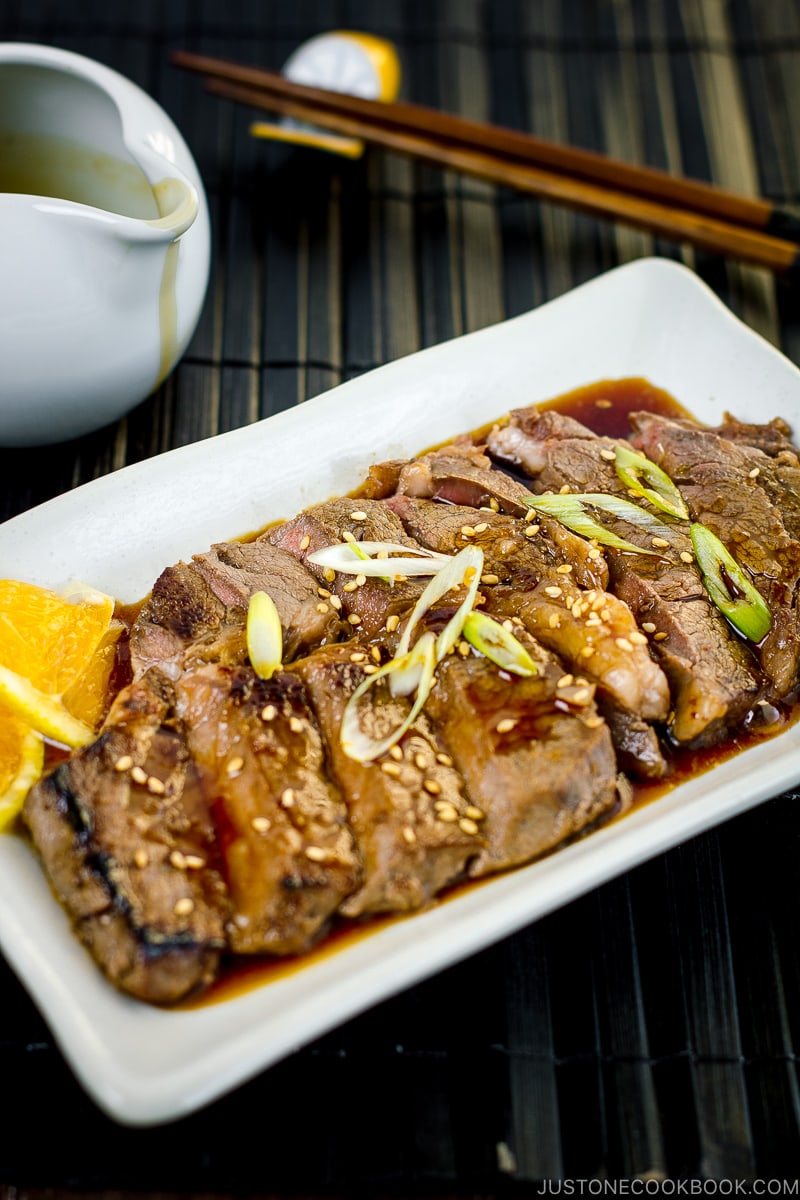
Today’s recipe Beef Teriyaki is actually more popular in the US and in other parts of the world than in Japan. Teriyaki is a cooking technique: “teri” means luster and “yaki” means cooking/grilling. For this type of cooking/preparation, fish and chicken are most commonly used in Japan but pork, hamburger steak, and meatballs are other ingredients that we use as well.
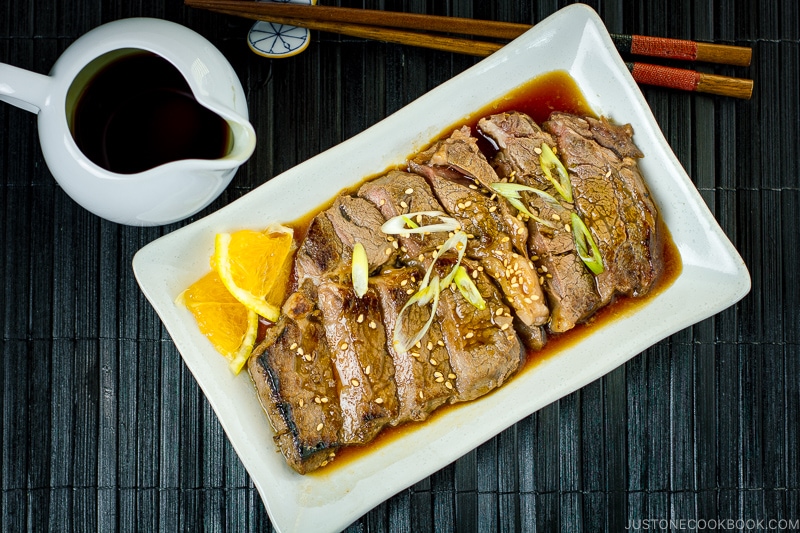
Beef Teriyaki with Homemade Teriyaki Sauce
For the homemade teriyaki sauce, we start off with a simple combination of soy sauce, sake, mirin, and sugar. To give it an extra zing, I also like to add in ginger juice to the mixture. Whisk them well in a bowl and bring it to a boil in a frying pan. As the sauce reduces, the sharpness of sake softens and the sugar caramelizes, bubbling into a lightly thickened sauce. Although it’s completely optional, I swirled in some corn starch slurry to create a thicker sauce this time.
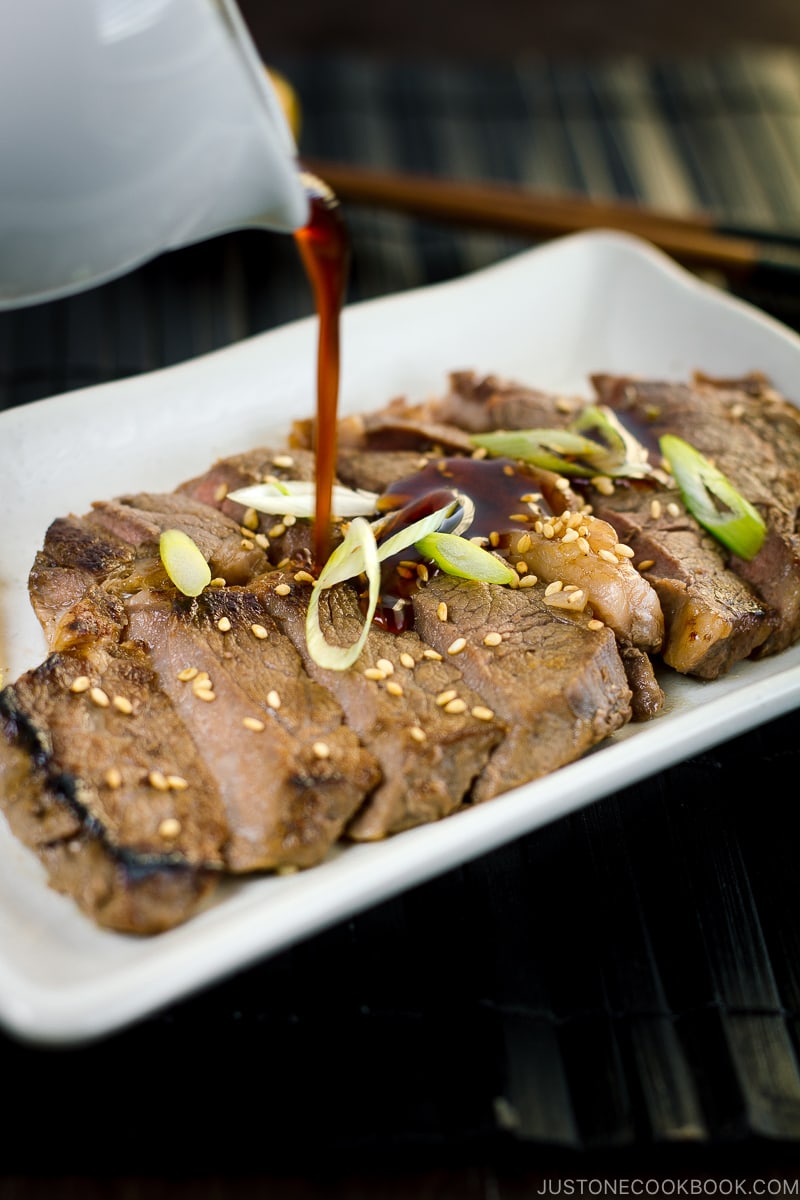
The beef steak is seared in a hot skillet or frying pan over the stovetop until slightly charred and glazed with the sweet-savory teriyaki sauce. Once it’s grilled to your desired doneness, remove the steaks to a plate and let rest to allow the succulent juices to distribute. We then slice the steak into thin pieces and serve it with a refreshing citrus salad and Japanese steamed rice.
Hearty & satisfying, this Beef Teriyaki recipe makes you feel extra special than your standard weeknight fare, yet it’s quick enough to pull together any night of the week.
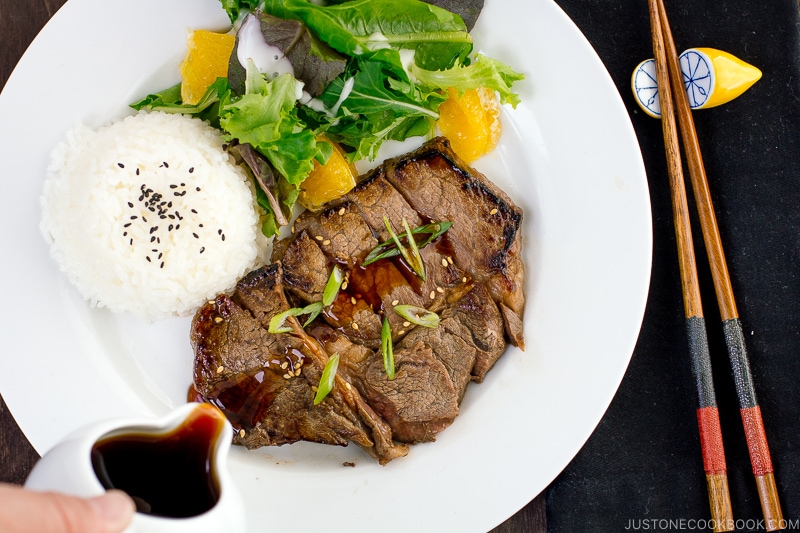
Wish to learn more about Japanese cooking? Sign up for our free newsletter to receive cooking tips & recipe updates! And stay in touch with me on Facebook, Pinterest, YouTube, and Instagram.
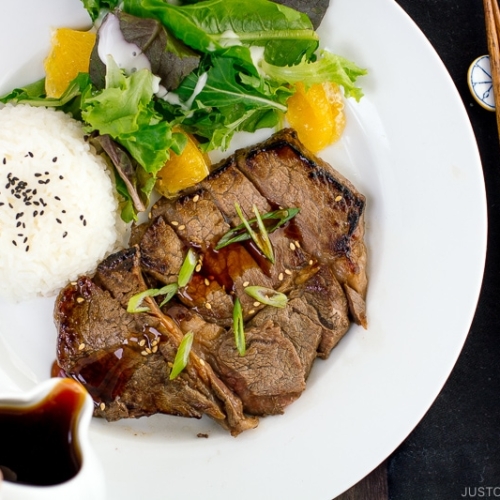
Beef Teriyaki
Ingredients
- 2 beef ribeye steak (each ½ inch, 1.25 cm thick; I used Snake River Farms American Kobe beef)
- 1 Tbsp neutral oil
For the Teriyaki Sauce and Marinade
For the Slurry (optional, to thicken the sauce)
- ½ tsp potato starch or cornstarch
- 1 tsp water
For Garnish
- 1 green onion/scallion
- 1 tsp toasted white sesame seeds
Instructions
- Gather all the ingredients.

- In a bowl, combine all the ingredients for teriyaki sauce: ¼ cup soy sauce, ¼ cup sake, ¼ cup mirin, 1½ tsp ginger juice, and 2 tsp sugar. Mix well to dissolve the sugar.

- Trim off the extra fat from 2 beef ribeye steak and put them in a resealable plastic bag. Add 4 Tbsp (¼ cup) of the teriyaki sauce to the bag to use as marinade. Tightly seal the bag and marinate in the refrigerator for 30 minutes. Remove the bag with the steaks from the refrigerator and let the meat return to room temperature before cooking.

- Meanwhile, heat the teriyaki sauce. Normally in Japan, teriyaki sauce is thin. However, American teriyaki sauce is often thick. If you prefer a thick sauce, combine ½ tsp potato starch or cornstarch and 1 tsp water and whisk well in a small bowl.

- In a large pan, add the teriyaki sauce and bring it to simmer for 15 seconds. If you prefer not to add the slurry, remove the pan from the heat and set aside.

- For thick teriyaki sauce, add the starch slurry to the sauce and whisk over heat until thickened. Remove the pan from heat and set aside.

To Cook the Steaks
- Before cooking the meat, make sure the steaks in the marinade are at room temperature. In a cast-iron skillet or frying pan, heat 1 Tbsp neutral oil on medium-high heat. When the pan is hot, remove the steaks from the marinade and pat them dry with a paper towel to prevent steaming.

- Then, add the steaks to the pan and sear for 2 minutes on one side, then 1½ minutes on the other side. That’s for medium-rare to medium doneness for the ½-inch-thick steaks that we had today.

- Pour 2 Tbsp of the teriyaki sauce over each steak. The sauce gets bubbly and gives the steaks a nice glaze.

- Remove the steaks from the pan to a plate before the sauce starts to burn. Let the steaks rest for 5–10 minutes to allow the succulent juices to redistribute before slicing.

To Serve
- In Japan, it’s not unusual to serve steak slices to eat with chopsticks. We eat steak along with a bowl of rice. If you plan to serve in the Japanese style, carefully slice the steaks into thin pieces.

- I sprinkle 1 tsp toasted white sesame seeds and 1 green onion/scallion (chopped) on top of the steak for garnish. Serve the remaining Teriyaki Sauce at the table and drizzle on top.

To Store
- You can keep the leftovers in an airtight container and store in the refrigerator for up to 3 days or in the freezer for a month.
Nutrition
Editor’s Note: The post was originally published on Nov 3, 2011. The contents have been updated in July 2017.
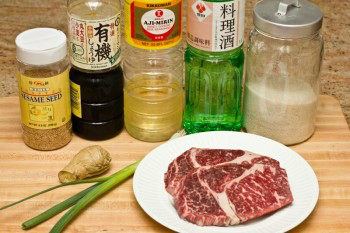

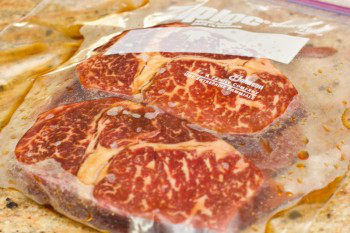
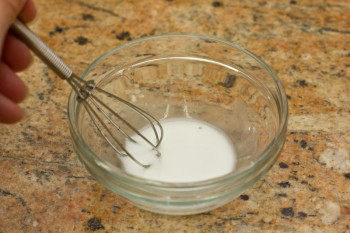
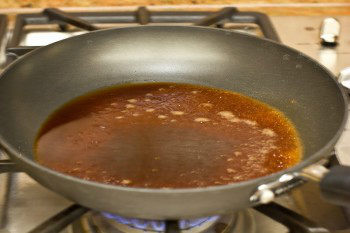

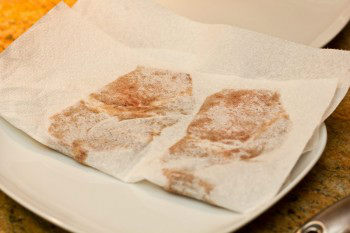

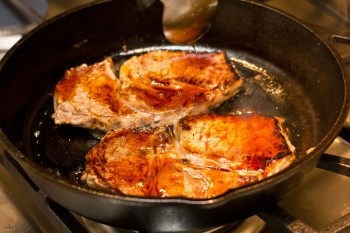
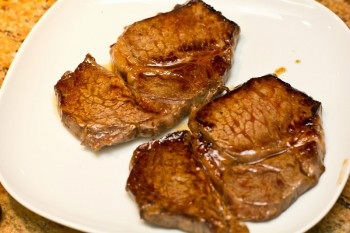











I have to say that ALL of your recipes that I’ve made from grilled* daifuku with the coarse azuki filling to chawanmushi have come out extremely well. This recipe, having used flank steak, is my husband’s most rave worthy favorite. He is still talking about repeating it.
*Having had this grilled daifuku with a sweet soy sauce outside Kiyomizu-dera, prompted me to search for a recipe and is how I found JOC.
Hi Judith! Nami and all of us at JOC are so glad to hear that you’ve been enjoying the recipes and everything else that we share. It means so much to us.
Thank you very much for your continued support and your kind feedback.💞 Happy Cooking!
Hi Nami
My son asked me to buy a teriyaki meal then I came accross this recipe, made it for the whole family and they cleaned the plate immediately
My daughter is a picky eater and she loves this. Its a great recipe, very easy, at only a fraction of restaurant meal cost
I added garlic sauteed vegetables on the side to make it healthier
Thanks for the recipe!
Hi Lia! Thank you very much for trying Nami’s recipe and for your kind feedback!
We are so happy to hear you and our family enjoyed Teriyaki! 🥰 Happy Cooking!
Looks good, I’ll try it tonight.
Step 3 says to marinate the meat in the fridge for 30 minutes. Than at step 7, you say the meat should be at room temperature before cooking. So, is there a long wait between those two steps where the steak has to sit out on the counter? (I plan on leaving the steak out to marinate for 30 minutes instead). Thanks!
Hi Dave, Thank you very much for trying this recipe! It depends on the room temperature. It may be a short wait or a long wait.
We always recommend marinating the meat in the fridge so that the bacteria would not grow during the time. We hope this helps!🙂
Oh my gosh, this recipe is SO good and so easy to follow. It tastes superb. Thank you, Nami!!
Hi Sheila! I’m so glad you liked the recipe! Thank you for your kind feedback. 🙂
We used the same method for chicken and beef teriyaki and grilled the meat on a charcoal grill. We also grilled some shishito peppers on the side. It was a great compliment to the teriyaki. I found that the sauce was slightly salty to our liking so I added some water till it was perfect. Great recipe! I’ll have to use it again when I have a summer family bbq!
Hi Eileen! Thank you for trying out my recipe and I’m glad to hear you adjusted to your liking. Thank you so much for your kind feedback. I love that you served the meat with shishito too! 🙂
[…] Beef Teriyaki […]
[…] versatility, and you can make many favorite family dishes like teriyaki chicken, teriyaki salmon to beef teriyaki. Once you start experiment with your own teriyaki sauce, you will have fun dishing out different […]
This recipe is great! I will never buy teriyaki sauce in a bottle again! I’ve made this a few times and tried it with different meats. It’s been great with everything so far. When I make it with steak my 3 year old gets mad at every bite that doesn’t go into his mouth. “My steak!” is all you hear at the dinner table. Thank you Nami!
Hi Neal! I’m super happy to hear you and your son enjoy this recipe! 🙂 It really made me happy. Thank you so much for your kind feedback and encouraging words! xo